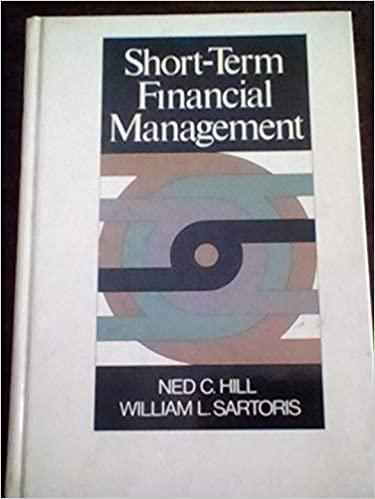Question
In the Black-Scholes-Merton option pricing formula N(d1) denotes A. the area under a normal distribution from zero to d1. B. the area under a normal
In the Black-Scholes-Merton option pricing formula N(d1) denotes
| A. | the area under a normal distribution from zero to d1. | |
| B. | the area under a normal distribution from d1 to d2. | |
| C. | the area under a normal distribution beyond d1. | |
| D. | the area under a normal distribution up to d1. |
The volatility of a share is estimated to be 30% per year. What is the standard deviation of the change in the stock price in two weeks?
| A. | 15% | |
| B. | 5.88% | |
| C. | 4.16% | |
| D. | 1.15% |
The risk-free rate is 4% and the expected return on a stock is 8%. A derivative on the stock can be valued by
| A. | assuming that the expected growth rate for the stock price is 4% and discounting the expected payoff of the derivative at 8%. | |
| B. | assuming that the expected growth rate for the stock price is 8% and discounting the expected payoff of the derivative at 4%. | |
| C. | assuming that the expected growth rate for the stock price is 4% and discounting the expected payoff of the derivative at 4%. | |
| D. | assuming that the expected growth rate for the stock price is 8% and discounting the expected payoff of the derivative at 8%. |
Rho measures
| A. | the rate of change of the portfolio value with the passage of time. | |
| B. | the rate of change of delta with the asset price. | |
| C. | the rate of change of the portfolio value with the volatility of the asset price. | |
| D. | the sensitivity of a portfolio value to interest rate changes. |
Step by Step Solution
There are 3 Steps involved in it
Step: 1

Get Instant Access to Expert-Tailored Solutions
See step-by-step solutions with expert insights and AI powered tools for academic success
Step: 2

Step: 3

Ace Your Homework with AI
Get the answers you need in no time with our AI-driven, step-by-step assistance
Get Started


